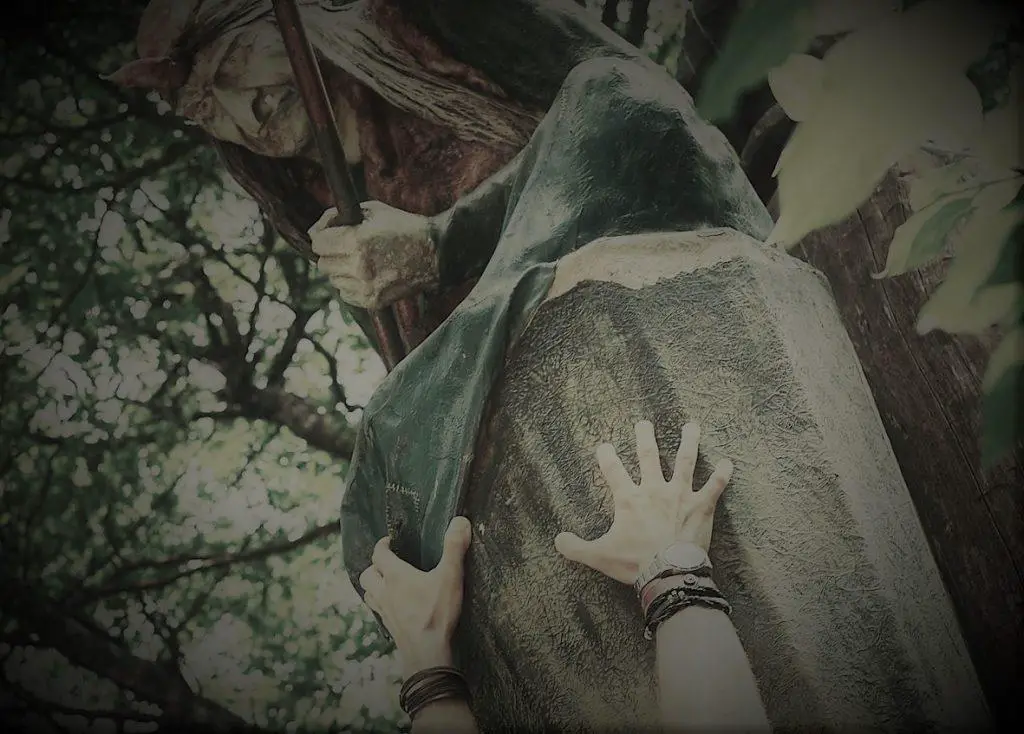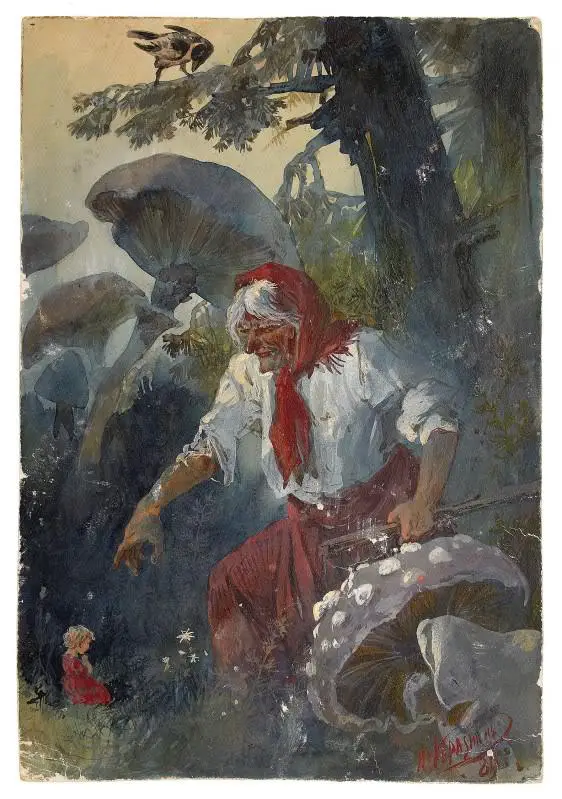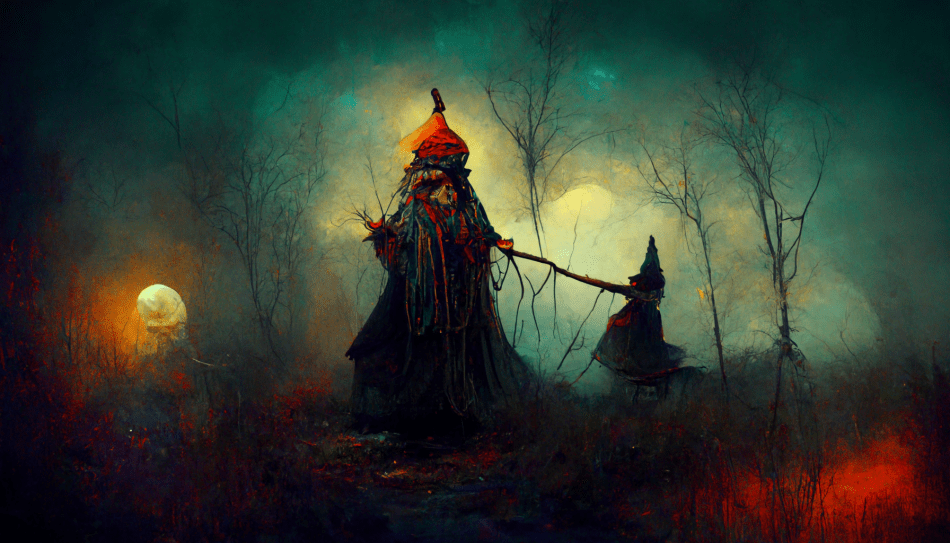Share the Lore!
By: Alex Postrado
The Original Old Witch of Slavic Folklore
For some, she’s a ferocious old witch. A cannibalistic villain and a child-eating monster.
For others, she’s a symbol of mother nature. An elemental goddess and the link between life and death.
Despite her association with a lot of contradicting things, the truth is — Baba Yaga has a far richer and deeper history than many of us realize.
From well-known interpretations of her story to the seemingly forgotten — but crucial — pieces of her identity, here is the compendious story of one of the most popular figures in Slavic folklore.
Behind the Curious Name
The name Baba Yaga — also spelled Baba Jaga, Baba Iaga, or Baba Roga — comprises two elements.
Baba, meaning an “older or married woman” in Slavic — related to the Russian word, babushka, meaning “grandmother”.
And Yaga — a harder to pin down element — which experts just assume is either a diminutive of the Slavic given name, Jadwiga, or a variation of Czech and Polish terms for a witch or wicked wood nymph.
Either way, the name Baba Yaga has been around since its first written appearance in Mikhail Lomonosov’s Russian Grammar back in 1755.
But, as for the oral folktale, itself — it can be traced down to the late 17th to early 18th century.
So, what does the lore tell us?

Meet Baba Yaga: The Origin and Lore
Imagine this.
A scraggly old woman with bony legs, iron teeth, piercing cold eyes, shriveled hair, and a terribly long nose that touches the ceiling when she sleeps.
That is how Baba Yaga is often said to look.
No one knows for sure how long that description of hers has been passed down, but Baba Yaga has been a significant part of Russian and East Slavic oral tradition for centuries.
Despite the varying details in every interpretation of Baba Yaga, there are actually four key things that typically make up her essence.
First, is her dwelling.
According to the legend, she lives deep in the forest, in a hut that is perched on large chicken legs. In some versions of her story, this hut even seems to have a life of its own and spins around with gut-wrenching creakings as it moves through the forest.
If — for some reason, though — you want to enter Baba Yaga’s cabin, you need to chant a secret incantation that goes like this:
“Hut, hut, turn your back to the forest and your front to me.”
Then, shall the cabin stop spinning and lower itself to welcome you in.
Seems easy? Well, not so much.
Before you even get close to Baba Yaga’s shack, you first have to walk past her fence made of human bones, topped with glowing skulls, and a lock made from the sharpened teeth of a human jaw.
And oftentimes, her home is protected by hungry dogs, geese, swans, or cats.
Another main characteristic of Baba Yaga is that she can fly with the help of a few magical possessions.
While she is known as one of the earliest witch figures in tales around the world, Baba Yaga doesn’t seem to want to conform with the witch-on-a-broomstick type of look.
Instead, she flies around the forest in a giant mortar, wielding a pestle in her right hand, acting as some sort of a magical rudder.
She still has a broom, though.
However, she holds it with her left arm to sweep clean all of her trails, so that no one can find her.
Baba Yaga is also known for her powers.
This mostly serves as the reason why people in the stories still try to look for her.
It is said that Baba Yaga is an all-knowing and all-seeing creature who “tells the whole truth to those who are brave enough to ask”.
Moreover, she is known as the ruler of all four elements — earth, water, fire, and air — and the link between our world, the heavens, and the underworld — as represented by her three horsemen.
A white horseman, a red, and a black — symbolizing her control of the daybreak, the sunrise, and the nightfall.
The final thing Baba Yaga is usually distinguished by is her appearance.
Yes, we’ve already gone through how she was said to look like. But would you believe that she wasn’t originally the old, scary witch we came to know today?

Baby-Eating Witch Or Mother-Nature Incarnate?
Some accounts of Baba Yaga paint her as “a witch with cannibalistic tendencies“. And in these renditions, she is infamously known to prefer eating young children whom she either kidnapped or she found wandering near her hut.
For hundreds of years, parents have used this narrative to frighten children from straying off.
Little did some know that Baba Yaga — rather than a fearsome hag — used to be the most beloved character in Slavic folklore, especially Russian.
Baba Yaga was this matriarchal icon, who — like nature — is unpredictable.
Widely recognized stories say that if you run into her, she will make you do her bidding — typically, kitchen chores — or else she will eat you.
What most retelling tends to leave out, however, is that Baba Yaga also grants wishes, welcomes travelers with food and drink, and can even become your biggest helper!
Again, just like mother nature and her tendency to wash us all away in an instant, if we fail to complete our basic tasks to her.
So, when did the lore of Baba Yaga start getting altered?
Well, that began when Slavic countries adopted Christianity.
We know that folklore normally stems from pagan tradition. Most — if not all — of our ancient tales aren’t real or — at the very least — remain disputable in their own terms.
In spite of that, when Christianity became an official religion to some Slavic nations such as Russia, this “too much paganism” still had to go.
The natural threat of Baba Yaga we are all too familiar with today is due to how the clergy portrayed her “in order to suppress pagan Slavic values”.
But, since the lore remained popular despite Christians’ efforts to trace her as a scary figure, Baba Yaga now has both attributes:
The good and the bad.
Those that label her the child-devouring crone of the forest.
And those that make her the beloved symbol of Earth, itself.
References:
Baba Yaga The Legend of Baba Yaga Explained Baba Yaga: The Scary Witch of Slavic Folklore Baba Yaga and Vasilisa the Fair Baba Yaga - Folklore Baba Yaga - Russian folk or a real character? The Enduring Allure of Baba Yaga, an Ancient Swamp Witch Who Loves to Eat People Russian Folklore: Baba Yaga as a Symbol of Mother Nature
